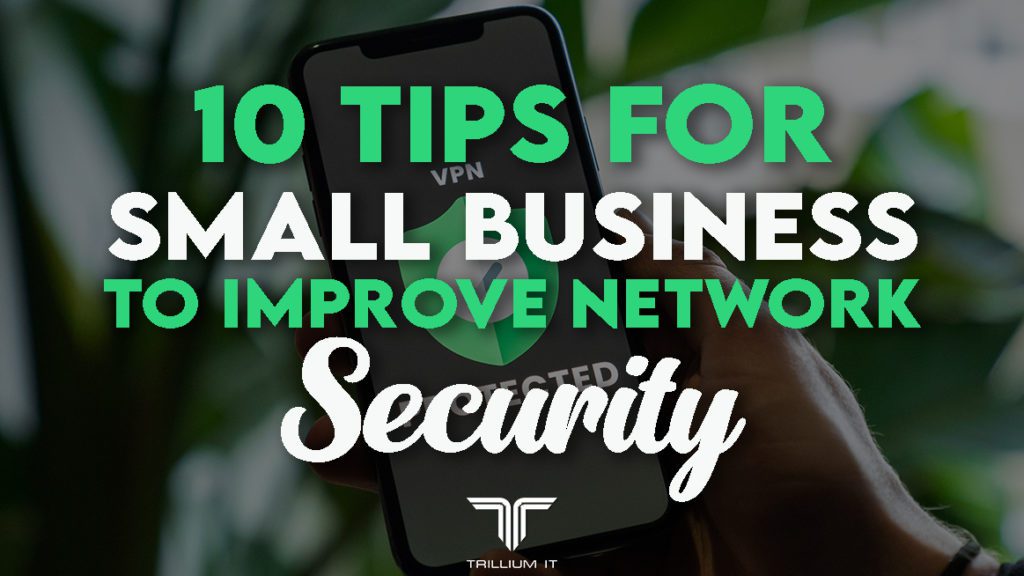Even if your company is small, hackers may still target it. Regardless of the size of your business, automated scanning techniques and botnets are primarily interested in exploiting security gaps in your network.
The good news is that small businesses may secure their networks in various methods without breaking the bank. You may limit your risks and lower the attack surface your small business shows to the public by integrating hardware, software, and best practices.
Defining Network Security

The word “network security” refers to a wide range of technologies, tactics, and procedures. It is a set of ideas and settings that use software and hardware technologies to secure the availability, integrity, and reliability of computer networks and data. Every organization, regardless of size, sector, or infrastructure, requires network security services to protect itself against the ever-expanding landscape of cyber threats in the wild today.
Today’s network architecture is complicated. It must contend with a constantly evolving threat landscape and attackers constantly looking for and attempting to exploit weaknesses. These flaws can exist in many objects, including machinery, data, applications, people, and locations. Numerous network security management solutions and applications are available today that target regulatory noncompliance and specific threats and vulnerabilities. Even a little period of outage can cause significant disruption, brand harm, and financial ruin for a company.
How Does Network Security Work?
Multiple layers must be addressed when addressing network security throughout an organization. Because the concept of network security layers allows for attacks at any level, your network security hardware, software, and policies must be built to target each region.
To protect networks, physical, technical, and administrative safeguards are commonly used. The many network security measures and how each control works are described below.
10 Tips for Small Business to Improve Network Security

1. Install a Firewall
The first step for any attacker is to look for open ports to find network vulnerabilities. Your small company network connects to the Internet via gateway ports. A hacker sees an open port as an opportunity to gain and abuse access. A network firewall prevents unauthorized access to unused ports.
A properly configured firewall is the first line of protection on any network. The network firewall decides which ports must be open and which must be closed. Only open the ports required to provide the services.
You must have the correct ports on your network if you are running Web and mail servers. If you are not hosting your website and email on your network, such as when you hire a service provider, your Web server and email ports should be closed.
Suppose you have a router in front of your service provider or DSL/cable modem. In that case, you almost certainly have a firewall. It is because the great majority of small business routers contain firewall functionality.
Log into your router and look for Firewall or Security options to see if your network has a router-based firewall. Locate your Network Connection details if you are unsure how to access your router on a Windows PC. Most likely, your router’s IP address is set to Default Gateway.
There are several desktop firewall programs available today. Still, they should not be mistaken for the firewall installed at your small business network’s principal point of entry. To filter out undesired traffic before it reaches any workstations or other network assets, install a firewall directly behind the point where your company’s network access enters the building.
2. Firewall Password Protection
It’s great that you have a firewall, but turning it on and leaving it on is never enough. Leaving the default password while setting network equipment is one of the most prevalent errors.
In many cases, an attacker can readily determine the manufacturer and model number of a networked device. It is single to obtain the user handbook to find the default username and password.
Sp is just as simple end some time creating this simple modification. After logging into your router or firewall, you can set a password; this option is frequently found under the Administration menu.
3. Firmware Update for Routers
Out-of-date firmware is a typical problem on firewalls and routers. Network equipment for small enterprises, like software and operating systems, must be updated for security and bug patches. Your small business router and firewall’s firmware will most likely become obsolete within a year of purchase, making it critical to replace it.
Using the simple dialogue boxes offered by various router manufacturers, you can check for current firmware versions from the router’s management menu. For routers without automatic firmware checks, find the version number in the admin panel and visit the vendor’s help page.
4. Ping Blocking
Most routers and firewalls let you choose how visible your router and firewall are to outsiders through several configuration options. One of the simplest methods a hacker uses to locate a network is to send a ping request, which is essentially a network request to test for a response. If a network device reacts, the hacker believes there is something that they may investigate further and possibly exploit.
You can make it more difficult for attackers to access your network by configuring your router or firewall to ignore network pings. A firewall and router’s administration menu frequently include a configuration option to suppress network pings.
5. Check Yourself
One of the simplest ways to detect open ports or obvious network issues is to scan your network like an attacker. You can view what security researchers (and attackers) see by scanning your network with their tools. One of the most common network scanning tools is open-source mapping software.
With adding a graphical user interface to the Nmap download for Windows, scanning your network for free using industry-standard technologies is now easier than ever. Examine your network for unapproved open ports, then return to your firewall and make the appropriate changes.
6. Limit IP Addresses
Most small business routers use DHCP by default, automatically assigning IP addresses to connected PCs. DHCP makes it simple to allow users to connect to your network, but it also makes it simple for attackers to join your network if your network is hacked. Suppose your small business has few users and visitors rarely connect to the network. In that case, you should consider locking down IP addresses.
You can probably specify IP addresses for DHCP users on the router/firewall admin page by selecting a menu item under network management. To assign an IP address, you must first find the device’s MAC address (for more information, see What a MAC Address Is and How Do I Find It?).
Reviewing your router’s logs, you can determine which IP address is linked with a specific computer and user. With DHCP, the same PC may have many IP addresses when devices are turned on and off. Knowing what is on your network can allow you to identify potential problems as they develop.
7. Use VLANs
Every employee in your small firm does not need to have access to the same network resources. You can split your network using virtual local area networks, or VLANs, in addition to passwords and application rights.
Virtual Local Area Networks (VLANs) enable network partitioning based on needs, risks, and quality of service requirements. For example, you could set up a VLAN so that the sales and finance departments are on separate VLANs. Another alternative is to designate one VLAN for contract or temporary workers and another for permanent employees.
Risk mitigation is to grant authorized users access to network resources while restricting access for unauthorized users.
8. Obtain an IPS
A firewall is not always enough to safeguard a small business network. Today, Port 80 handles most network traffic, whether HTTP or Web traffic. If you leave this port open, you will be vulnerable to port 80 attacks.
In addition to the firewall, the Intrusion Prevention System (IPS) can play an essential role in network security. An intrusion prevention system monitors network traffic for anomalies that may signal the existence of hostile activities in addition to monitoring ports.
In some cases, IPS technology is integrated into a router’s Unified Threat Management (UTM) system. Consider whether developing your small business’s network requires purchasing a separate physical box.
Another alternative is to run open-source software on your servers (or as virtual instances if you are virtualized). SNORT is one of the significant open source IPS solutions, and Sourcefire, a for-profit company, promotes it.
9. Get a WAF
A Web Application Firewall (WAF) protects against application-specific threats. If your small business network does not host apps, the threats that a WAF can help to mitigate are less severe.
WAF in front of (or as part of) your Web server is an important technology to consider while hosting applications. Barracuda is one of the network WAF device providers. Another option is the open-source ModSecurity project, supported by the security firm Trustwave.
10. Use VPN
Suppose you’ve gone through the trouble of safeguarding your small business network. In that case, it stands to reason that you should also protect your mobile and remotely connected personnel.
Your remote employees can connect to your network via an encrypted tunnel using a VPN or virtual private network. Through this tunnel, use the same firewall, IPS, and WAF technologies available to locals to protect your remote staff successfully.
Furthermore, a VPN safeguards your network by preventing mobile users in risky locations from connecting insecurely.
Conclusion
Even a tiny business may secure its network by following these easy guidelines. Hackers often choose the most straightforward and accessible targets despite disliking small enterprises. Secure your network with a firewall and understand your internal network with secured IPs, VLANs, and VPNs.
Contact a firm like Trillium IT if you want to further increase the security of your network. If you work with Trillium IT, you’ll have complete control over your network’s safety and functionality. Make an investment in a safe network that no one else uses.



